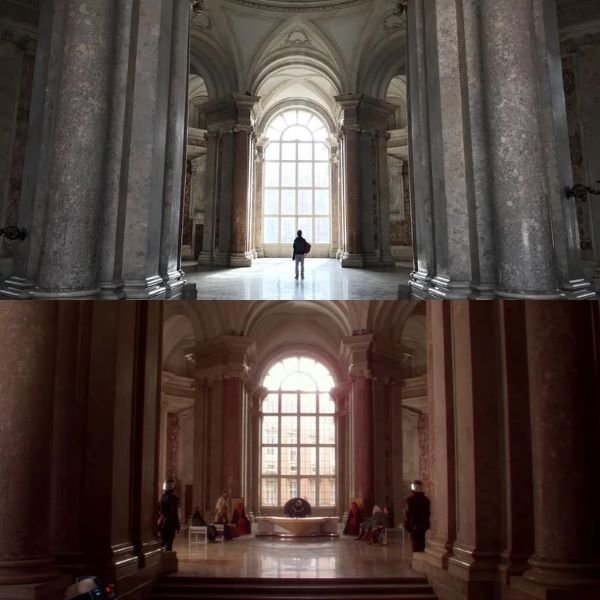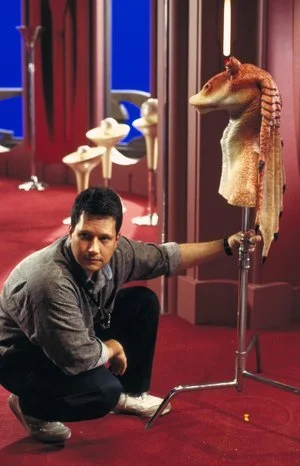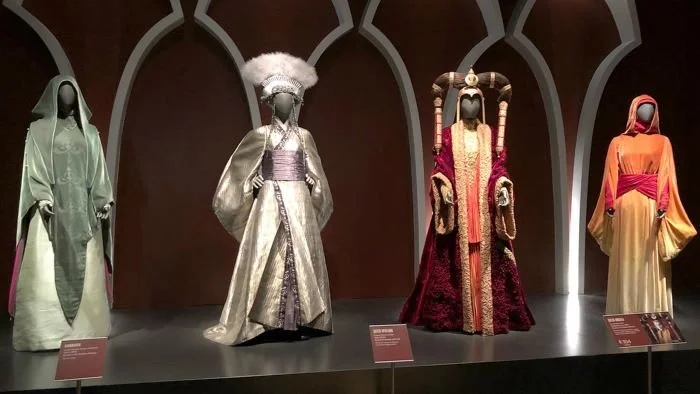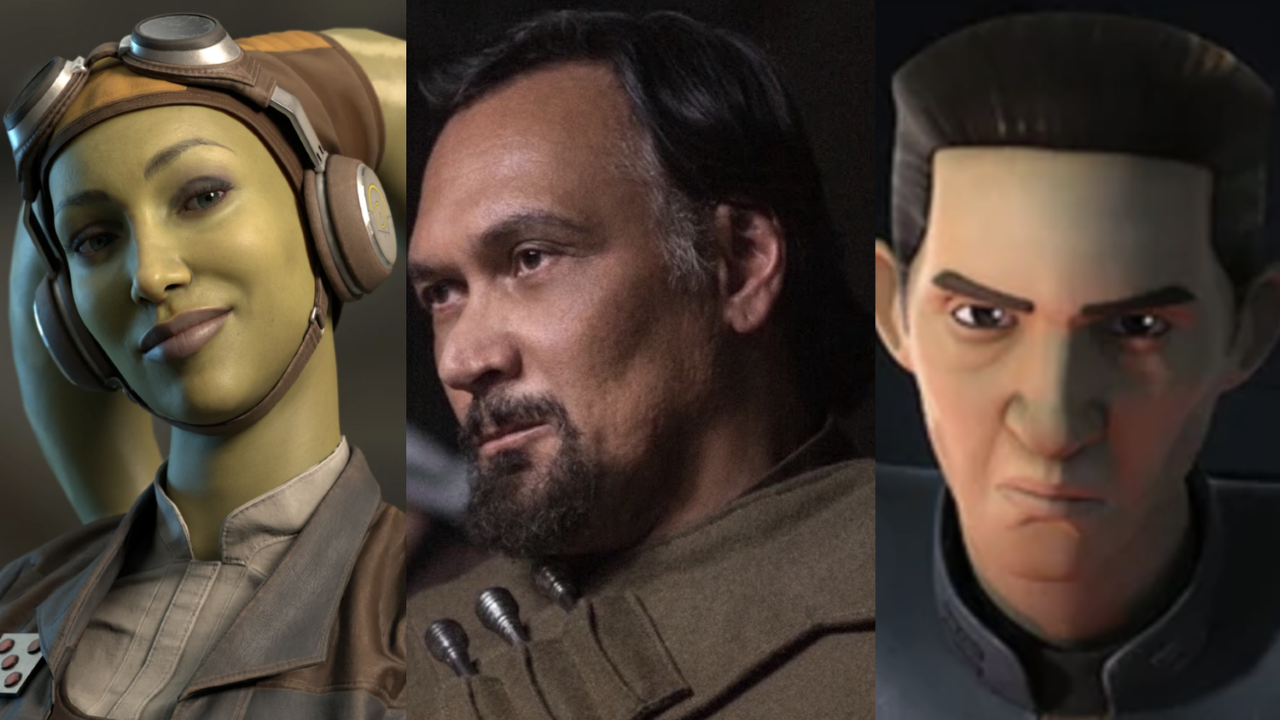10 Interesting Behind The Scenes Facts About 'The Phantom Menace'
Image Source: Wallpaperset
Star Wars: Episode I - The Phantom Menace arrived in theaters on May 19, 1999, breaking a dry spell for fans who had been clamoring for more stories set in the Star Wars universe since The Return of the Jedi debuted 17 years prior. No matter if the movie is among your most-loved or most-despised, it is hard to deny its significance, be it to the fandom, the universe, the culture, or filmmaking. The conversation around this entry is ongoing, and in that spirit, we present ten facts of interest about its production.
1. George Lucas Was Overwhelmed By The Scale Of The Film
When director George Lucas finished watching the rough cut with his team, he conceded that he “may have gone too far in a few places.” Ben Burtt, famed sound designer, remarked that “it’s a lot,” referring to the quick succession of scenes that run an audience rapidly through the gamut of emotions in the climax, and Lucas, clutching at his head, agreed that “it boggles the mind.”
RELATED:
That being said, and despite admitting in a later conversation that “it’s a very hard movie to follow,” the Star Wars creator was committed to his overall vision, and said that “you almost can’t take any of those pieces out of there now.” While that original rough cut isn’t what fans eventually saw in theaters in May of 1999, some of the criticisms of Burtt and others still apply to the final product. There is so much story packed into The Phantom Menace that Lucas’ prediction that “a regular person’s gonna go nuts” was ultimately realized.
2. John Williams Adapted Celtic Poetry For The Score
To write some of the vocalizations for the score of The Phantom Menace, Academy Award-winning composer and long-time George Lucas collaborator John Williams took inspiration from centuries-old Celtic poetry. In particular, he borrowed lines from The Battle Of The Trees, which some friends at Harvard obligingly translated into Sanskrit for him. The choral vocalizations heard during the great duel of Obi-Wan and Qui-Gon Jinn against Darth Maul are sounds and phrases from that Sanskrit translation.
Williams expressed the reason for introducing a choir in this scene as his “thinking that something ritualistic … and/or pagan, and antique might be very effective.” Considering that “Duel Of The Fates” is possibly the most recognizable piece of music written for any Star Wars movie since the original trilogy, that seems to have been right on the money.
3. Over Three Hundred Aluminum Lightsaber Blades Were Destroyed
The Phantom Menace features some of the most impressive lightsaber combat in the franchise, and the work that went into making the actors proficient in their choreography was not without cost. Stunt coordinator Nick Gillard built over three hundred lightsaber blades out of aluminum for Liam Neeson, Ewan McGregor, and Ray Park to be able to make good contact in their training. These ultra-light dueling weapons were repeatedly bent in training, after which Gillard would sometimes be able to gingerly bend them back to being usably straight. Ultimately, all these were beaten and bludgeoned out of service.
Of course, the willingness to let the cast play hard at honing their combat skills paid off, as the final fight stands up to repeat viewings thanks to its high energy and intense pacing, and is frequently ranked among the best ever filmed.
4. C-3PO’s Movement On Set Was Achieved By Puppetry
Fans can instantly recognize Anthony Daniels’ signature voice work as the precocious protocol droid, C-3PO. The actor’s lissome frame was also squeezed into the slender gold-hued suit in the original trilogy, but this was impossible in shooting The Phantom Menace, given that the wiring and other inner workings of the droid were exposed. Rather than film Daniels for 3-PO’s scenes and digitally replace him, this early version of the droid was achieved through simple puppetry.
Puppeteer Mike Lynch stood behind the full-size practical droid in each scene in which he was to appear, and the puppet mirrored the movements of the performer. The visual effects team simply painted Lynch out in post. This isn’t to say that Daniels wasn’t involved in bringing the character to life this time around. He was onset during shooting to offer his input, and he still voiced the character in the finished film.
5. Anakin’s Podracer Was Inspired By An Italian Racecar
Image Source: Twitter
One of George Lucas’ favorite cars is the 1963 Maserati Birdcage, which he suggested to designer Doug Chiang as a reference for the cockpit of Anakin’s iconic podracer. The sweeping curves of the fenders and headrest made an unmistakable statement. Doug Chiang has worked on a number of Star Wars projects, and credits Lucas for helping to mold his approach to design, including “looking at common objects in an uncommon way.”
Doug was integral to the creative designs of many other elements in the film: starfighter droids inspired by Pterrasaurs, the queen’s Nubian starship patterned after the Lockheed SR-71 Blackbird, and the control deck of the Federation battleships that evoke the helm of historic tall ships.
6. A Former Rolls-Royce Factory Housed The Shooting Stages
Leavesden Studios in Watford, England provided the space for 600 workers, working in three shifts around the clock, to construct the enormous sets. The facility began its life as a manufacturing base for thousands of aircraft during WWII. From 1967 on, Rolls-Royce owned and operated the site, continuing to produce aircraft engines until the factory was shuttered in 1992.
After The Phantom Menace was shot here, Warner Bros. leased the site to shoot the Harry Potter franchise films, following which time, they purchased it outright. The first film shot here under the new studio ownership was the 2014 Tom Cruise-starring sci-fi actioner The Edge of Tomorrow, continuing the site’s legacy of producing high adventure escapist fantasy.
7. The Theed Royal Palace Was Shot On Location In Italy
Image Source: Reddit
Of course, not everything was filmed on a soundstage. The Caserta Palace, north-east of Naples, Italy, was a real location used for several interior scenes taking place in the Theed Royal Palace on Naboo. The Baroque architecture creates an unmistakable sense of scale and grandeur that helps the headquarters of Naboo’s royalty feel particularly grounded in reality.
Built in the 1750s, the palace became a UNESCO World Heritage Site in 1997, and UNESCO’s website describes it as “an eloquent expression of the enlightenment in material form, integrated into, rather than imposed on, its natural setting.” Of course, the Jedi highly value living in tune with nature and with the Force, making this an especially fitting location.
8. The Finished Film Contained About 1950 Effects Shots
Image Source: Twitter
John Knoll, Chief Creative Officer, and Senior Visual Effects Supervisor at Industrial Light & Magic, has said that there are about 1950 effects shots in The Phantom Menace. While this is far and away a greater number than the 360 or so effects shots in the original A New Hope, it is surprisingly fewer than the roughly 2000 effects shots used in The Force Awakens, which is often lauded for its perceived return to a more practical approach to shooting.
In 1998, nine months before the film’s release, Knoll said that there were 350 shots completed up to that point, which represented about one-third of the work to be done. Obviously, the demand for special effects in the movie increased somewhat before the final release.
9. The Various Creature Designs Were Inspired By Real Animals
Image Source: CGchannel.com
Life in the Star Wars universe is diverse, to say the least, and the way that diversity expressed itself in The Phantom Menace is partially owed to the input of illustrator Terryl Whitlatch. Her unique vision comes from having been drawing since she was only 2, and having her craft shaped by having an illustrator for a mother, and a biology teacher for a father. She spent much of her childhood in zoos and museums, and had ample opportunity to examine specimens that her dad brought home.
Whitlatch has said that, while working on The Phantom Menace, George Lucas insisted to her and others that fantastical animals needed to have intuitive, grounded designs that audiences would recognize as alien, but still be able to understand. Her background in zoology helped lend credibility to her designs as she thought about more than just the animal’s appearance, giving consideration to where it lives, how it survives, where it is on the food chain, and a host of other ecological variables.
10. The Award-Winning Costumes Took Over A Year To Create
Image Source: Exhibiting Fashion
Costume designer Trisha Biggar worked for over a year with a team of artisans to create the couture for the worlds of The Phantom Menace. The truly outlandish, but always carefully crafted, costumes included delicate details that are easy to miss in the midst of the densely packed film. Of course, the glowing orbs in Amidala’s throne room attire are easy to spot, but there are also the silk folds of her parade costume that were all individually dyed and hand-painted. That same costume features a unique collar inspired by a Japanese parasol, while another costume’s headdress incorporates pearls sourced from an evening gown that was close to 90 years old at the time the film was made.
The intense and highly detailed work didn’t go unnoticed. Biggar went on to be nominated for four awards the following season for best costume design, of which she won three, including the Saturn from the Academy of Science Fiction, Fantasy & Horror Films.
READ NEXT:
Source(s): StarWars.com, Fantha Tracks, Ranker, Warner Bros., UNESCO, Slash Film, Muddy Colors, CNN, Vogue, IMDb, YouTube [1], [2], [3]








